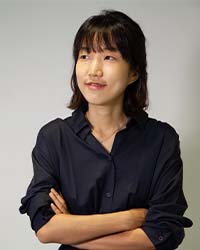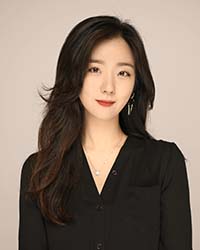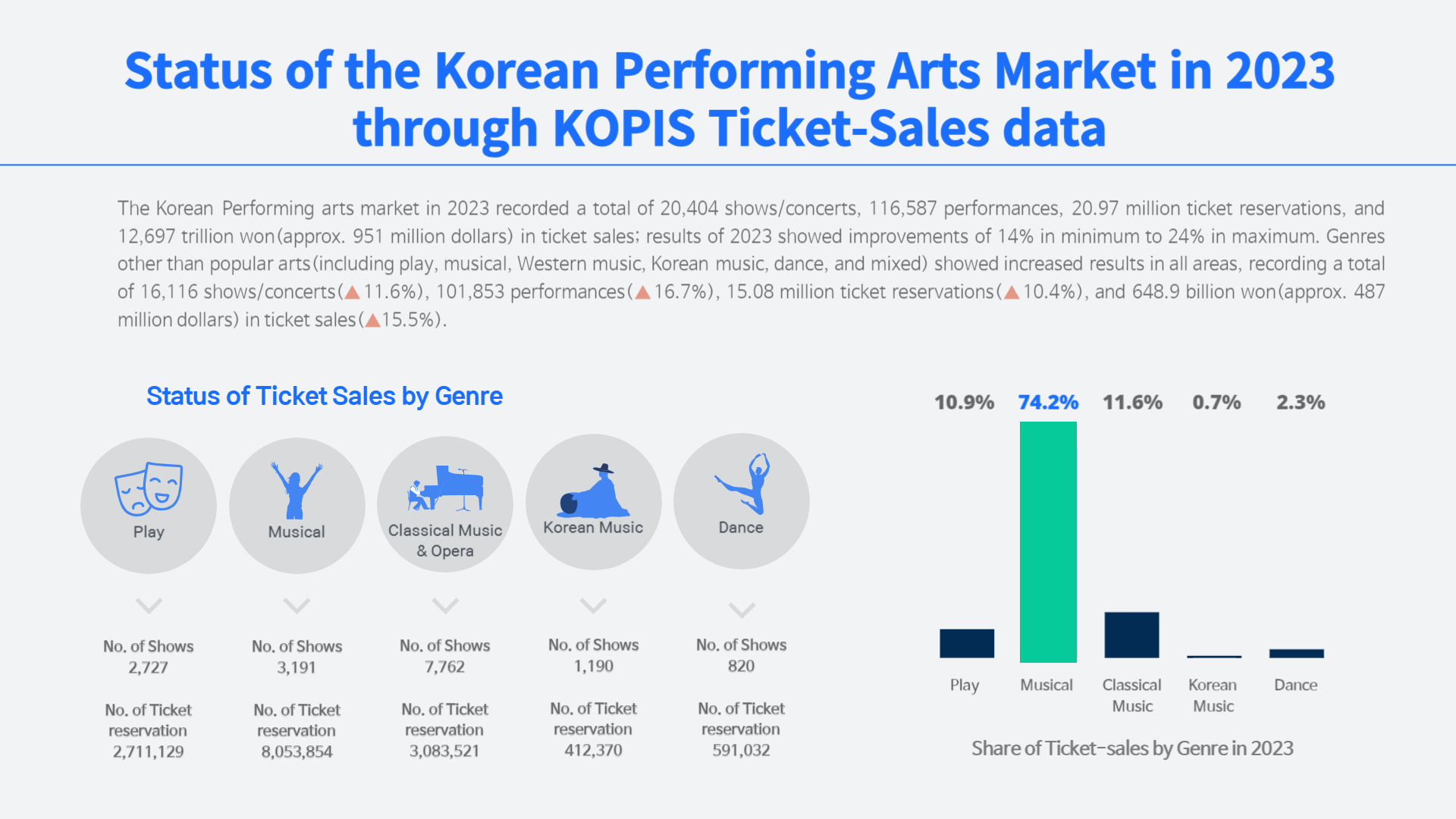Keeping Eyes on What is Happening
by Young-Gyun Heo (Chief Editor of TheApro)
The Performing Arts Market in Seoul (PAMS). New Associate Directors Jin Yim and SooHye Jang shared with me internal and external updates on how PAMS is being prepared. This talk gave us an opportunity to take a clear look at its orientation and direction as it is slowly revealing itself.
What is an Associate Director?
There are many changes in PAMS 2022. One is the newly appointed Associate Directors. I understand that Associate Directors work closely with the Creative Director and PAMS Connectors, and that they are experts who work with KAMS for the successful planning and operation of PAMS based on their expertise in international exchange in the performing arts. Can you introduce yourselves and tell us what the roles of Associate Director are in your opinion?
Soohye Jang: My main focus has been Korean dance festivals including the Seoul International Dance Festival, SIDance. As an independent producer, I’ve continued working together with institutions and art groups. And with PAMS, I have worked previously as a Connector. Through these experiences, the scope and roles that I can take on as a producer have got bigger. Last year I founded an art and culture production and research company named Connected A to continue my research and productions. I work in any genre, but I personally think my skill set is needed more in the dance genre.
Jin Yim: I am an independent producer working in the fields of theater and street arts. I used to work on inviting works from overseas for festivals, then expanded my work scope by taking on international exchange projects or international co-productions. As I began to work more with artists from creative art groups, I stopped working with foundations or public institutions. I decided to work in what’s considered to be the private sector, so it has been about 7 years since I became an independent producer. I also have worked as a PAMS Connector, and as a mediator in the field of street arts. I am currently working on organizing the Pohang Street Arts Festival, and also working as a member of the managing group of Samilro Changgo Theater.
Creative Director Kyu Choi first proposed the position to me. He said that he needed someone who was going to balance his work as he was taking charge of directing both Seoul Performing Arts Festival(SPAF) and PAMS. As Artistic Director of SPAF and Creative Director of PAMS, Kyu is establishing an organic relationship between two individual events, SPAF and PAMS. And our role is to provide balance and checks as collaborators while working more closely with PAMS. We exchanged many opinions about the position, and the titles producer and assistant director were amongst them. However, I said I didn’t like to be an assistant director. Rather than assisting, I thought it would be better if my involvement is in the framework of cooperation for making something together if possible. While working as PAMS Connector last year and the year before that, there were things I wanted to try out in PAMS. Therefore, when Kyu made his proposal, I thought I could play a role in making contributions and bringing ideas to its organization and management.
There are PAMS Connectors for each genre. Can we think that the way PAMS has assigned its Connectors reflects how PAMS categorize performances? I am also curious to hear how the genres are selected.
Soohye Jang: Each genre has a Connector, but what they all have in common is the amount of experience they have in international exchange. In fact, I don’t think genre is meaningful within PAMS, and the way Connectors look at performances is the same too. Their roles have been set up in a way that each genre is embraced and taken care of. Rather than only taking care of the genre you are assigned to, Connectors’ roles were set so that they can make a bigger input in their own genre. And that’s how we came to have theater, dance, multidisciplinary, street arts, art and tech, and music as separate genres.
Jin Yim: The funny thing is that there is no mention of genres in any articles officially introducing PAMS. We are not at all saying that this categorization is how PAMS separate genres, nor are we trying to define PAMS. We are introducing Korean contemporary arts and conveying the idea saying that there is such a big diversity in it.
Soohye Jang: I think Connectors are the people who already have good trust from artists. We wouldn’t say that each Connector represents their genre. However, we do think that it is important to reduce time spent in communicating with artists when carrying out projects.
Jin Yim: I am aware of the inevitable reality that we cannot embrace all genres and all areas. Also, I felt pressure thinking that I would have to continue studying a lot when I took the position.
Soohye, there is a parenthesis at the end of your title that says (dance). It must be related to the fact that the theme of PAMS Season in 2022 is dance. How are your roles different from those of Jin?
Soohye Jang: While Jin is engaging with the overall management of PAMS, I am oriented to dance more specifically. PAMS Season is being introduced for the first time this year, and we are having a ‘Dance Season’ this time. I worked for SIDance, and I am working as one of the partners of Seoul Dance Center, which means I have links with collaborating institutions in Korea. Therefore, I think my mission is to close the gap between PAMS and domestic partners while collaborating with them. So far, PAMS has been held around September and October, and it has felt like there has been a disconnection between PAMS and other festivals that took place around the same time. I am one of the people who had the most difficult time, and I heard a lot from many international presenters who visited Korea around the time of PAMS saying that there is a lack of connection between PAMS and other events.
Jin Yim: I have participated in PAMS for quite a long time. There have been many connections I could make within PAMS. Many people I met through PAMS have become my colleagues, and I am applying many things I learned from PAMS to my work. Therefore, PAMS has become a holiday to celebrate in the performing arts sector for me. A good holiday without annoying relatives. I think one of my roles as Associate Director is to make connections between the field and projects. It is my role and my goal to make more people feel like PAMS is a holiday.
Why is international exchange and international circulation important?
The ultimate goal of PAMS is the international circulation of Korean arts. Why is it important to introduce and circulate Korean arts internationally?
Soohye Jang: I went on a business trip to Greece recently. It has been a while since the pandemic has stopped most international exchange, so it was a good opportunity to look back and see how much we have grown. We find commonalities through an exchange, but I also believe that it is differences that allow us to grow. International exchange allows us to understand not only the Korean context but also the international context, and that expands our perspectives and grows our artistic capability. When looking at a few countries that are completely cut off from international exchange, it is obvious that they are held back.
Jin Yim: There is a whole wide world and I am curious to go everywhere and know everything. It is my personal desire. And working in international exchange satisfies a lot of that desire. Until now the term “exchange” has mainly been used when dealing with international exchange, but now it is more like “interweaving.” It is about fabrics from both sides being weaved together to make something new and reveal what was obscured. Facing the time of crisis, I’ve seen many challenges that one could not handle on his own. There definitely are times for solidarity, but a rapport, and information about each other or trust are prerequisites for solidarity or actions that will follow. And international exchange is necessary work to lay the foundation for that. To be straightforward and approach it easily, we have to make money. It is an international exchange market. There are not many art groups which have established a business model perfectly through international exchange. Nevertheless, international exchange is a field where one can enter into the market and create demand with art. I think it still has potential and it is necessary.
What you are saying is related to the art ecosystem. PAMS has selected ‘sustainability’ as its theme this year, and it looks like the sustainability of art’s ecosystem is what PAMS is focusing on exploring.
Jin Yim: I think it is time for PAMS to settle into its roles in the art ecosystem, and many of the programs that we are planning reflect that idea. Sometimes we reconnect what had got disconnected. The goal is to reintroduce PAMS to the global market. Moreover, we think a lot about what experience we can offer to the people who participate in PAMS. We want to go further than providing good audience experience with our programs in the market, so we are devising ways which allow people to build relationships. Rather than planning so-called mega-events that are large scale, we are thinking of programs that will connect people with shared interests. Some will make strong and close connections, and others will be more comfortable and casual.
Soohye Jang: For the last 2 years, some people said they were disappointed by PAMS. However, I don’t think that time was unmeaningful. I had many conversations about what exchange is while I’ve been preparing for this year’s PAMS, which has broadened my views and allowed me to refine my focus. We can exchange ideas or people, or the exchange itself becomes an asset that could lead us to something else. Therefore, we are interpreting exchange in a longer term perspective as we are preparing for this year’s projects, and I think that’s why it was possible for diverse stories to have come out.
Jin Yim: In last year and the year before that, PAMS had gone through a different experience than before due to COVID19. It became a very valuable asset for PAMS. Previously PAMS had been a platform that circulated artworks, but now we can dare to say that it is becoming an information exchange platform based on that foundation built over time.
Soohye Jang: What seems to be common among festivals, markets, conferences and other events in Asia is that they are mostly organized by public institutions. Therefore, they have a more formal feeling in nature. I think Kyu Choi invited Associate Directors in order to bring a casual atmosphere on this front.
How PAMS operates
I get the impression that PAMS’ mode of operation and perspectives have become flexible overall as much as its structure has changed. How does the team communicate internally as it is preparing for PAMS? And how do you communicate with the organizer, the Korea Arts Management Service (KAMS)?
Jin Yim: We don’t have our desks in the KAMS building. As private sector producers, we work on an as-needed basis and asynchronously. I think Kyu works at the office almost every day. There are more ad-hoc meetings than regular meetings at the moment. We are using various productivity tools to work together on our projects. The previously used work process where we would draft a summarizing document and share it via email each time was not only slow but we also missed many things. So, we now take advantage of useful online tools to converse with each other, and accumulate minutes from previous meetings so that we can track our footsteps. Rather than one person taking all the minutes, we all participate in taking them and share them amongst us so that all of us are aware of the direction of our planning. Most of the planning documents for the project we have mentioned today are drafted as Google documents. I think the way we communicate with each other within the team will be reflected on PAMS when it is held.
Soohye Jang: I also received many documents in the last few years that I was working with PAMS. It was hard for me and for many others, but we didn’t speak out. But Jin took the initiative and brought innovation. The structural change introduced new software, which changed much of the way we communicate. The new way is effective not only when we work together internally, but also when we work with our collaborators overseas.
Jin Yim: I think PAMS should accumulate human capital for KAMS as it continues. Some people are capable of taking on various types of work while others are capable of carrying out what they have taken on more professionally. The latter is more about being capable of carrying out a long-term project. And that’s where PAMS fundamentals have not been very strong internally. Many people who worked for PAMS have left it, and there will be more HR changes in the future. I think there is instability in the organization. Many of my colleagues overseas ask me who they need to get in touch with if they want to do international exchange with Korea in a stable manner. When they do, I introduce them to producers rather than organizations. While people in charge of international exchange in organizations change too often, producers continue to do the same work for years to come. As a producer who connects the organization to the external actors, I want to channel that dynamism and bring it to PAMS.
Soohye Jang: I agree. The most important thing in networking is people, and we are the ones who bring people together. We have to ensure sustainability on this front, and it is time to find solutions. I think this issue is relevant not only to KAMS but to all other institutions. For example, when you visit Denmark, it is very clear who to contact for what, but we don’t have that in Korea yet. Recently I did a research on international exchange during the pandemic. I interviewed artists to find out how they view international exchange, and the first question was about ‘their first experience of international exchange.’ Many artists started their international exchange through a platform. They are actively doing international exchange on their own afterwards. Many of them said it is a shame that many platforms disappeared due to the pandemic.
Lastly, can you tell me about your experience of working as Associate Director? About fatigue, growth, happiness and sadness?
Soohye Jang: Rather than an ambition saying “I have to do really well” or “I have to grow”, I feel more burdened by the fact that PAMS will be a face to face event this year after a long time. And what’s more important is the next season. Because I think now we are at a stage where we are foreseeing and preparing for what to come after the dance season. I think how I do my work will have an impact. So, my goal in a realistic sense and my top priority is to carry out my work as Season Director in a stable manner. Restoring relationships between PAMS, artists, domestic institutions and the art ecosystem is my biggest goal, and I am trying to have as much fun as possible in the process.
Jin Yim: Indeed, I do this because I need PAMS for me and my colleagues. I still love PAMS, and I am rooting for it. It is so much fun, very challenging, and I feel a lot of responsibility.
▶ Date
PAMS|Sep 26(Mon) ~ Sep 29(Thu)
PAMS Season ‘Dance’|[Seoul] Sep 25(Sun) ~ Sep 28(Wed) / [Busan] Sep 29(Thu) ~ Sep 30(Fri)
▶ Theme|Sustainability
▶ Programe|PAMS Choice, PAMS Pitching, PAMS Salon, PAMS Roundtable, etc.
▶ Place|In-Person + Digital = #Hybrid
▶ Registration will be opened in July

Jin Yim
As an independent producer, Jin has been working on a wide range of culture and arts projects with artists, festivals and international colleagues in the performing arts sector. She has been focusing on the contemporary performing arts sector including street arts and arts in public space, with a particular interest in healthy performing arts ecosystem, international exchange and solidarity.
Social Media

Soohye Jang
A performing arts producer and independent researcher. She founded ‘Connected A’ in 2021 for strategic partnerships with institutions and artists, and continues her activities that are needed for the industry including project development, research and international exchange. She also engages in the social practice of art through art education.
Social Media








 PREV
PREV

.jpg)
.jpg)
.jpg)
.jpg)











